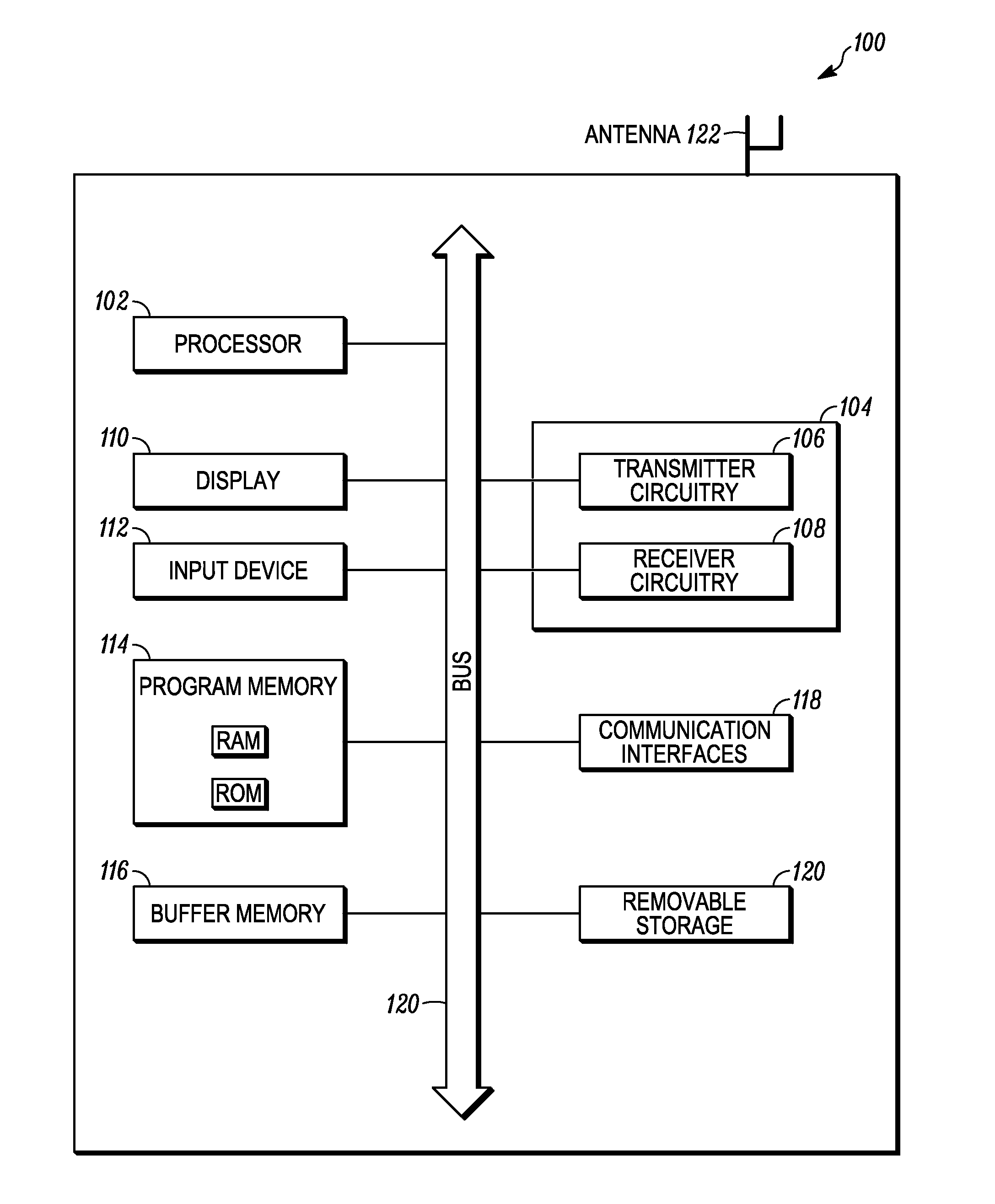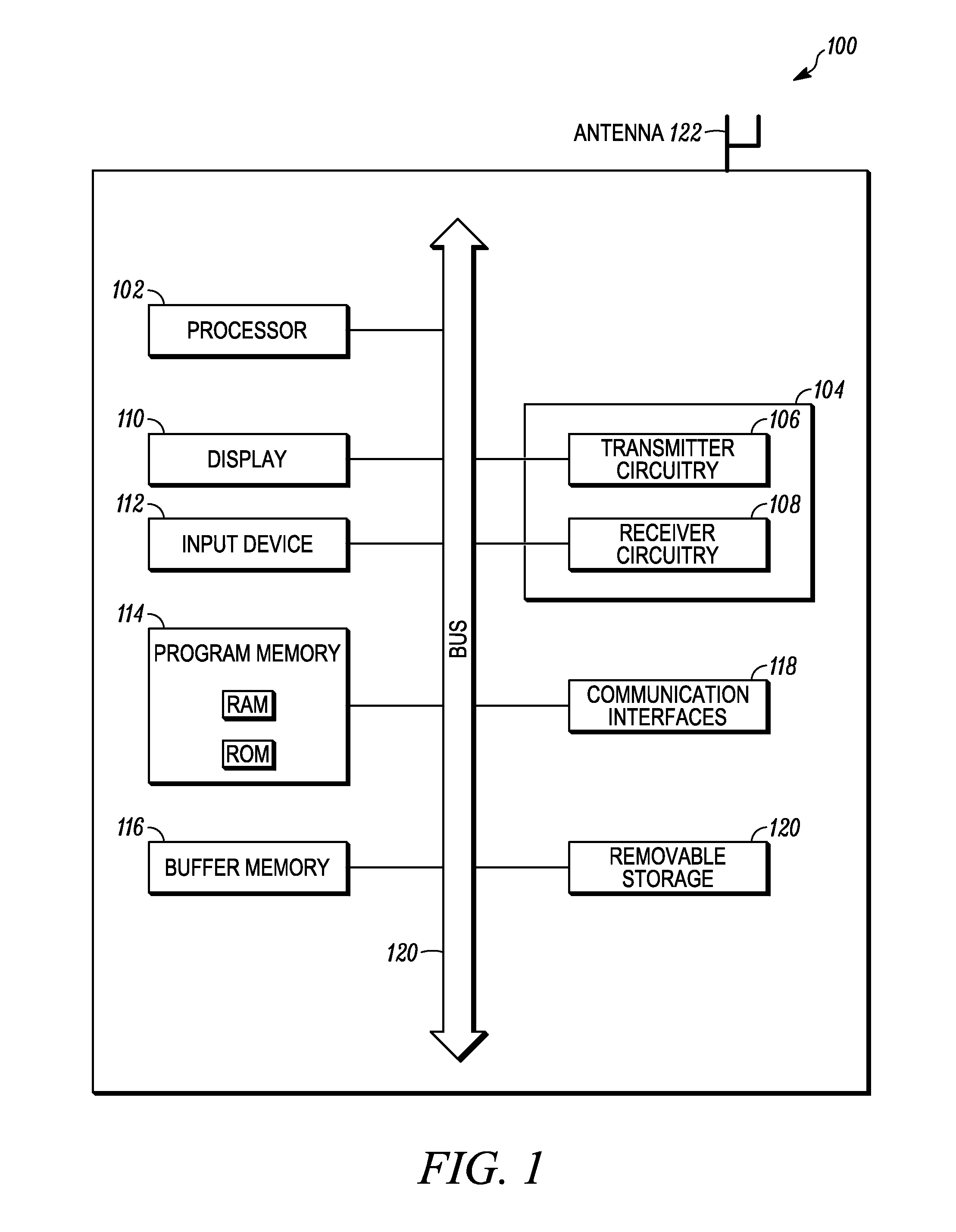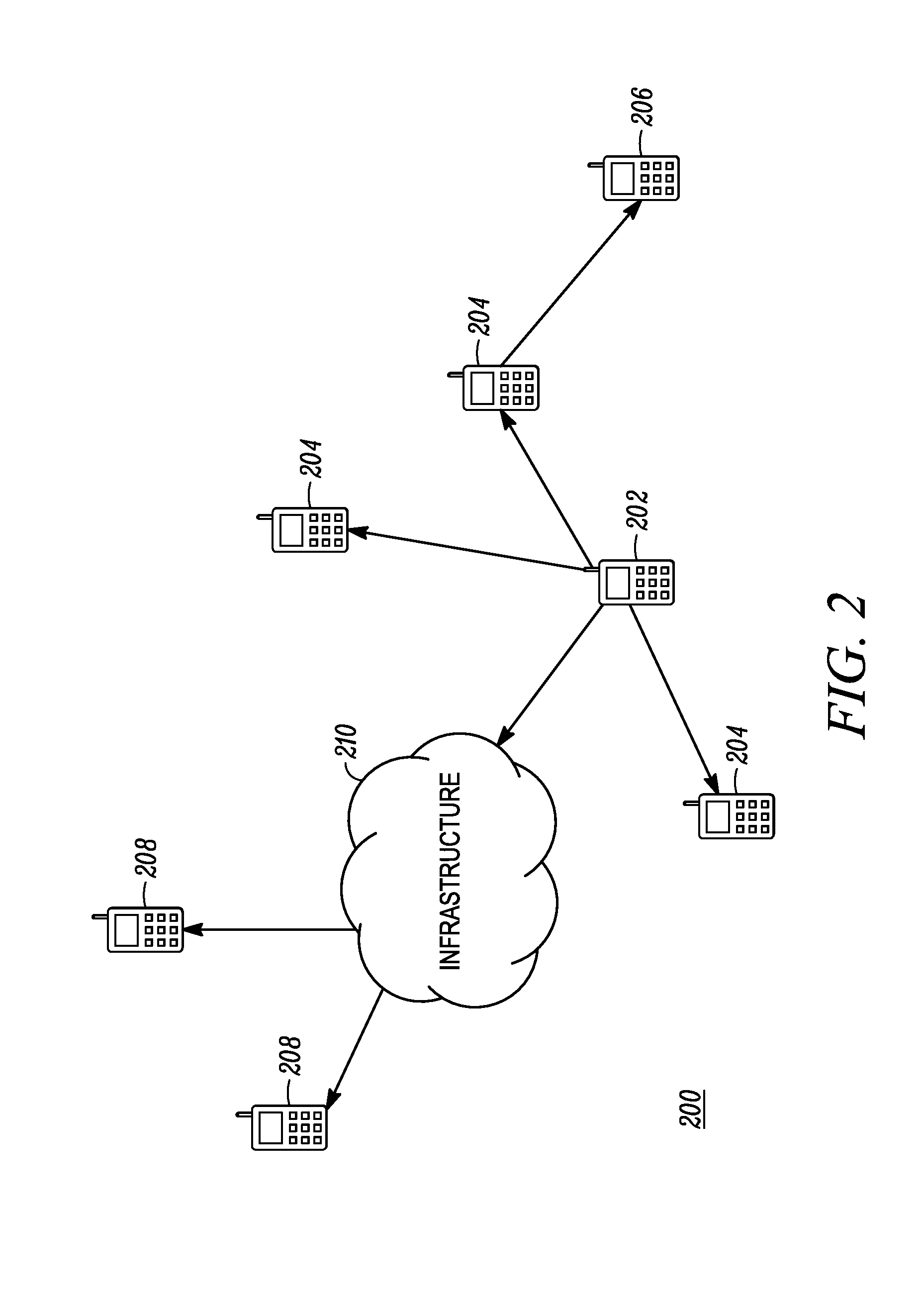Howling suppression using echo cancellation
a technology of howling suppression and echo cancellation, applied in the direction of transducer casings/cabinets/supports, electric transducers, transducers, etc., can solve the problems of inability to communicate, inability to accept delays, and the desired signal is often undesired by filters, so as to reduce or eliminate howling
- Summary
- Abstract
- Description
- Claims
- Application Information
AI Technical Summary
Benefits of technology
Problems solved by technology
Method used
Image
Examples
Embodiment Construction
[0023]The present application describes reduced howling between a transmitter and collocated receiver by use of echo cancellation. The receiving circuitry in the transmitter is active and uses audio signals encoded by the transmitter to cancel audio feedback. The encoded audio signals used in this manner are supplied via a feedback loop containing a delay and may be wholly internal or may be received externally from the network to the feedback loop.
[0024]As used herein, mobile devices are communication devices such as personally portable or vehicle-mounted mobile handsets that are able to communicate with each other, e.g. by having selected the same channel. A group of mobile devices in communication is referred to as a talkgroup. A particular channel on which the mobile device is communicating is typically selected at the mobile device through one or more user-actuated selectors. A mobile device may be a transmitter that transmits an audio signal on a particular channel to receiver...
PUM
 Login to View More
Login to View More Abstract
Description
Claims
Application Information
 Login to View More
Login to View More - R&D
- Intellectual Property
- Life Sciences
- Materials
- Tech Scout
- Unparalleled Data Quality
- Higher Quality Content
- 60% Fewer Hallucinations
Browse by: Latest US Patents, China's latest patents, Technical Efficacy Thesaurus, Application Domain, Technology Topic, Popular Technical Reports.
© 2025 PatSnap. All rights reserved.Legal|Privacy policy|Modern Slavery Act Transparency Statement|Sitemap|About US| Contact US: help@patsnap.com



